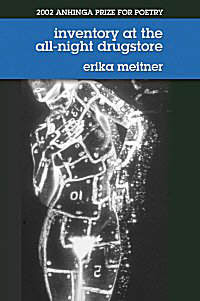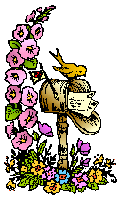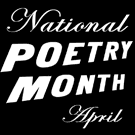
Please welcome C.W. Gortner to Savvy Verse & Wit:
Juana la Loca, known to history as the Mad Queen of Spain, has certainly had her share of bad press. Infamous for her unruly temperament, she allegedly was so jealous and possessive of her husband Philip of Habsburg that she let her entire world fall apart, preferring to track down his infidelities than attend to her kingdom.
But, how much of her obsessive sexuality is true?
Juana and Philip’s tumultuous marriage certainly became a scandal of epic proportions that raced through Europe’s royal courts much the way celebrity scandal fuels the Internet today. It is said Queen Anne of Britanny, wife of Louis of France, eagerly awaited her spy’s dispatches from Flanders every week, impatient to discover the latest in the saga that wrecked Juana’s reputation. While it is amusing to picture the rotund French queen ripping open dispatches and gleefully reveling in the Spanish Infanta’s misfortune, what happened to Juana, and the effect it had on her image for centuries to come, is not. Much like the late Princess Diana, whose collapsing marriage so mesmerized us with its undercurrent of royal sexual woe, there was far more to Juana’s predicament than an inability to turn a blind eye to extramarital dalliance. And much like Diana’s, the marriage that started out with such fairytale promise would in the end become a weapon used to undercut Juana’s stature with calumny and distortion of facts.
While we can never know for certain, it seems likely Juana and Philip enjoyed a mutually satisfactory sex life—at least at first. Like most royal couples, their marriage was arranged according to political necessities. They did not set eyes on each other in person until she arrived in Flanders as a fifteen year-old virgin bride. Unlike most royal couples, they were apparently so besotted with each other that Philip ordered them wed on the spot, so they could hasten their nuptial night. Her ladies reported to Juana’s mother Queen Isabel that the Infanta and the Archduke were “active in pursuit of an heir”; they seemed very much in love, until Juana discovered that Philip believed he had the prerogative to seek pleasure elsewhere while his wife was expecting. For Juana, the shock must have been considerable. She had been raised under the strict guardianship of her mother, sheltered in many ways from the world’s harsh realities. While she must have known about her own father’s infidelities, she did not emulate the example set by her mother or other queens of the era, which was basically to treat the indiscretion as unworthy of notice. Instead she confronted Philip and thus sowed the first seed in the alleged disintegration of her sanity.
Some say Juana’s jealousy is proof that derangement lurked under her tempestuous nature and her infamous attack of one of Philip’s mistresses after a catastrophic visit to Spain is always the centerpiece of this theory. History records that following Philip’s abrupt departure from Spain, Juana fell into a melancholic stupor, forced to stay put until she gave birth to their fifth child. As soon as she did, she went berserk, unhinged by rumors that Philip had taken a mistress in her absence, refusing all counsel and staging a horrific protest in the castle where she was lodged until her ailing mother had no choice but to let her daughter return to Flanders in the dead of winter. While certainly dramatic, this story ignores the desperate political crisis Philip’s actions had precipitated in Spain and the untenable situation Juana faced. So, she undertook that fateful step that would brand her forever.
Every story has two sides. The cliché of the sexually obsessive wife who kept tabs on her husband’s every move even as her kingdom was torn asunder is convenient for Juana’s detractors, and she certainly displayed at times a spectacular forthrightness that stunned her contemporaries. It was not in Juana’s nature to remain passive or silent. She was far more complex than history has allowed—and infinitely more interesting than the stereotype she has become. From her initial youthful naïveté to the misguided belief that love could change anything Juana’s relationship with Philip twisted into something much crueler and darker, initiating a battle that, when viewed in its entirety, negates the legend of a queen enslaved by her own uncontrollable desires.
C.W. Gortner’s fascination with history is a lifetime pursuit. He holds a Masters in Fine Arts in Writing with an emphasis on Renaissance Studies from the New College of California and often travels to research his books. He has experienced life in a medieval Spanish castle and danced a galliard in a Tudor great hall; dug through library archives all over Europe; and tried to see and touch — or, at least, gaze at through impenetrable museum glass — as many artifacts of the era as he can find.
Ballantine Books, an imprint of Random House, publishes The Last Queen in trade paperback on May 5, 2009. A Random House Readers Circle Selection, it features a reading group guide and Q&A with the author. C.W. Gortner is also available for reader group chats by speaker phone or Skype. Visit Reader Groups for more information.
He lives in Northern California. You can visit his Website.
***Giveaway Information***
2 copies of The Last Queen have been donated by the author for my awesome readers.
1. 1 entry, comment on my review on May 8.
2. 1 entry, comment on this interview.
3. Tell me if you are a follower or follow this blog and tell me for a 3rd entry.
4. Spread the word on your blog, etc., and get a 4th entry.
Deadline May 22, 2009, 11:59 PM EST
***THIS GIVEAWAY IS NOW CLOSED***
***Giveaway Reminders***
1 copy of Rubber Side Down Edited by Jose Gouveia, here; Deadline is May 15 at 11:59 PM EST















